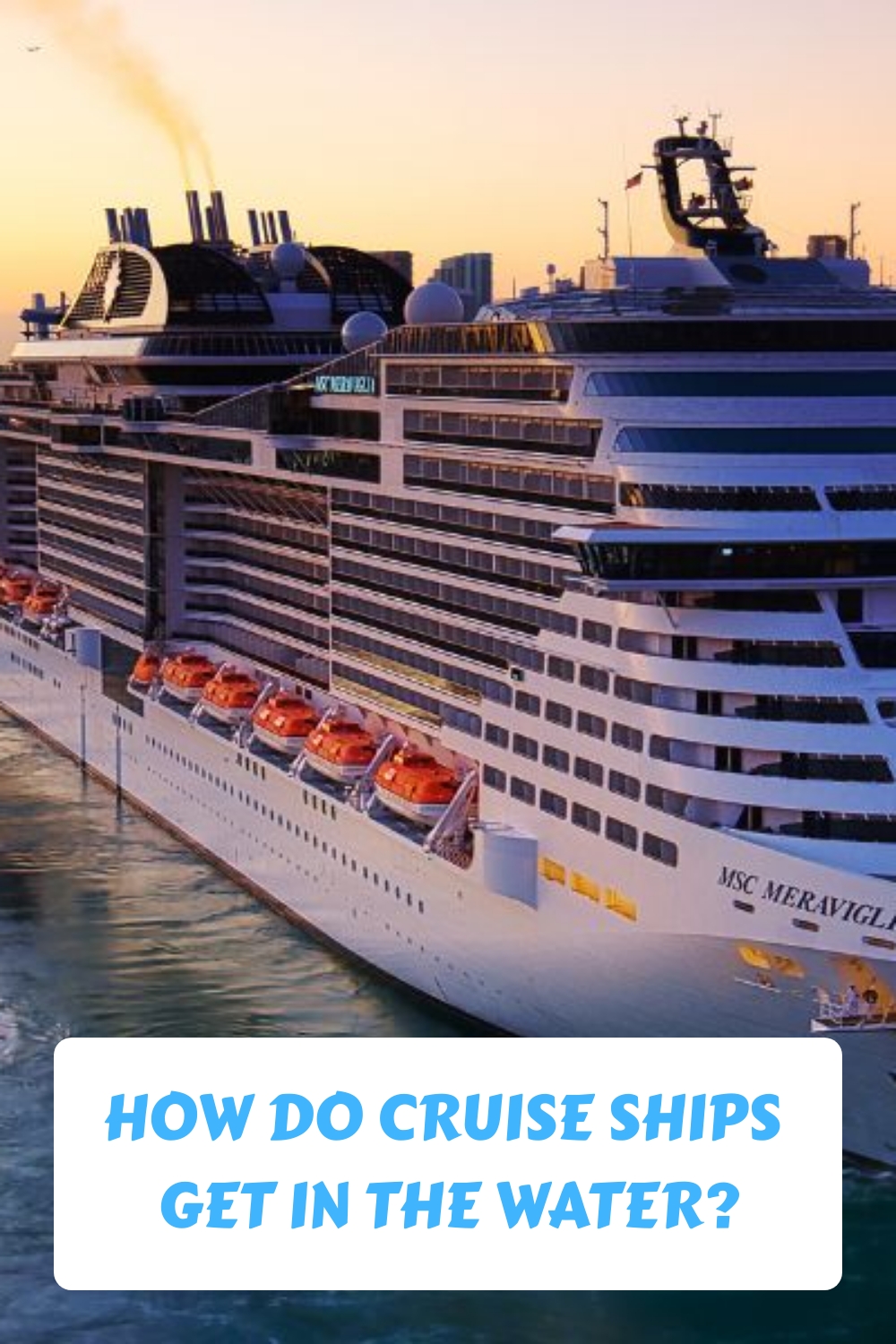Cruise ships are epic, magnificent feats of engineering. But how are such incredible ships, which are often huge, launched in the first place?
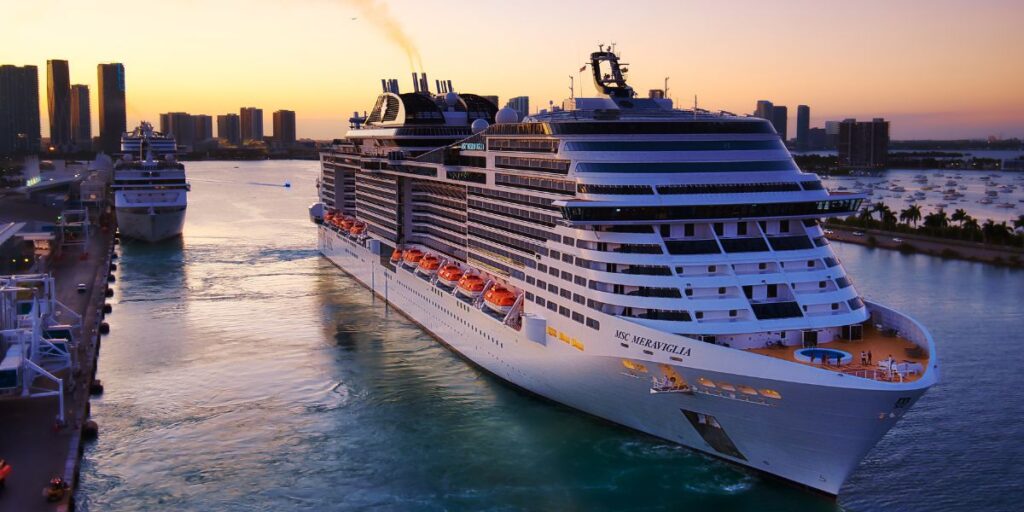
You might’ve wondered this when standing atop a deck of the biggest ships on the ocean, or you might just have an interest in shipbuilding.
In this guide, I’ll explain the different ways that ships can be launched, and which method is primarily used for cruise ships.
The different ways ships can be launched…
There are four main ways that ships can be launched into the water. Two of those only really apply to smaller ships, though.
1. Mechanical launching
Mechanical launching involves using a crane to lift a boat or small ship, and then move it into the water. Imagine trying to do this with a cruise ship!
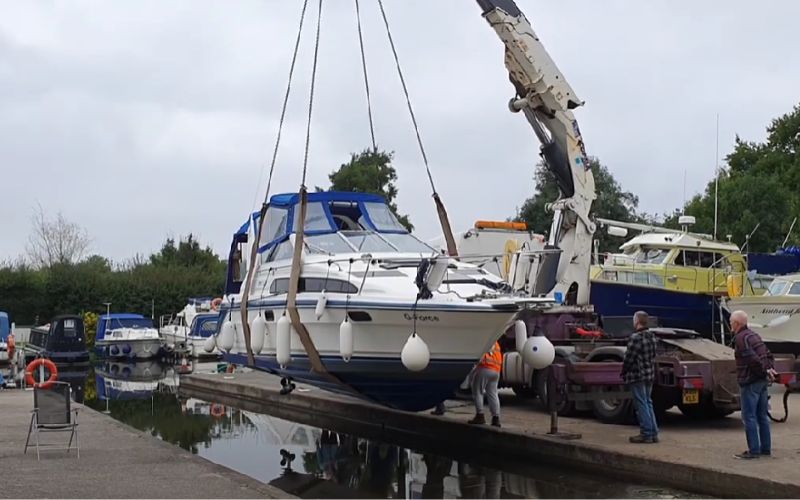
2. Air bag launches
Some boats and small ships are launched by placing air bags underneath, inflating them, and then using that cushion of air to slide a ship into the water.
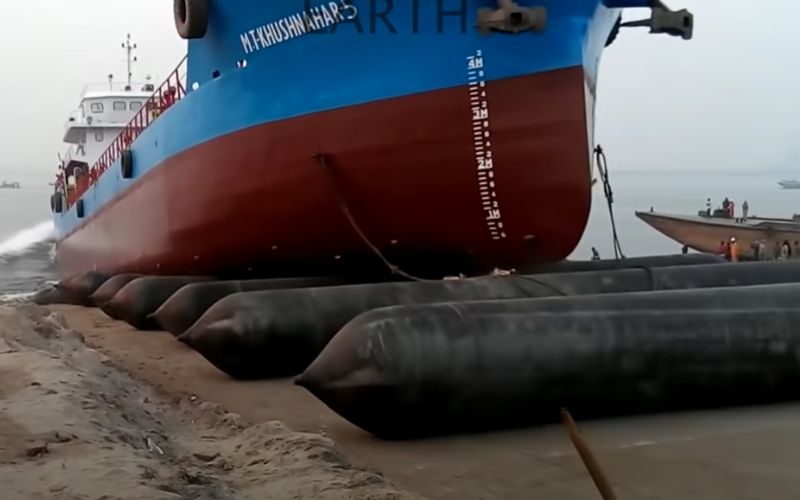
The two methods above aren’t possible with most cruise ships. There’s not a crane in the world that could lift a completed cruise ship, nor can airbags lift that much weight.
3. Gravitational launching
Gravitational launching is a method used for cruise ship-sized vessels, but not really with actual cruise ships these days.
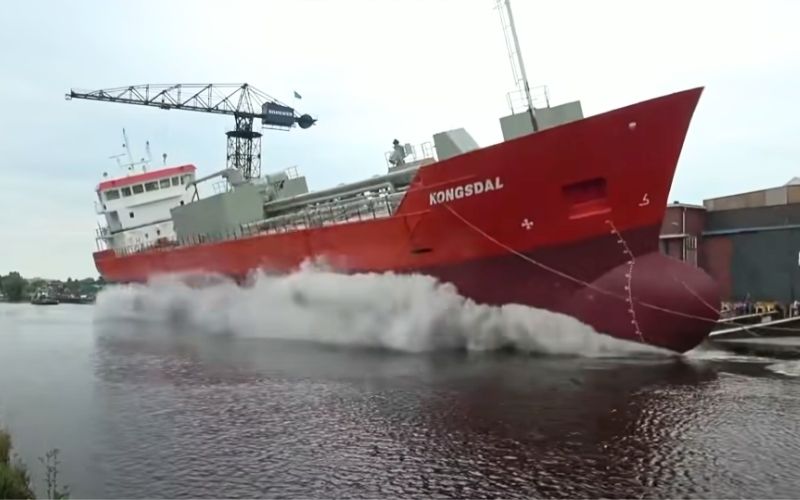
This method involves transporting the ship to the side of the water, if that wasn’t where it was built, and then using sliders to slide the ship into the water at the side.
The momentum causes the entire ship to plunge into the water, before it rights itself just in time to avoid taking water on from the top deck.
It’s messy and dramatic, and it risks damage to the ship because of the pressure placed on it by the sudden force of water.
It looks cool on YouTube videos, though.
4. Floating out
The fourth method is possibly the most boring, but it is by far the most sensible for cruise ships. Cruise ships are ‘floated out’.
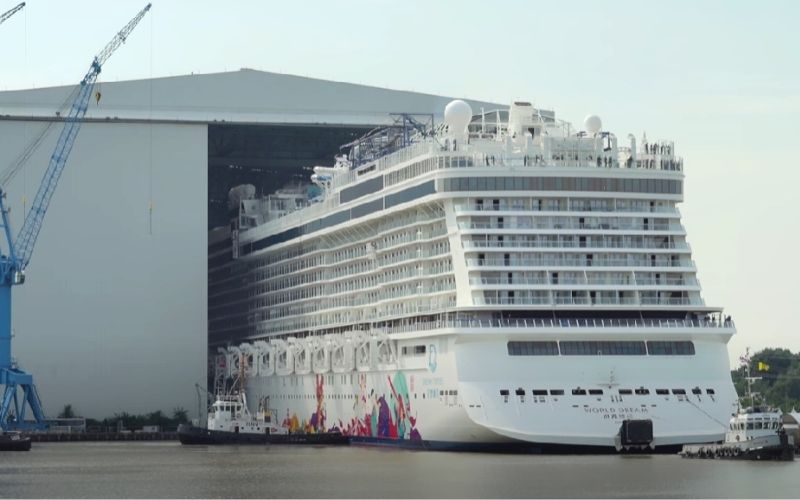
How floating out works
Cruise ships are launched into the water using the float out technique. This means the cruise ship is built in a special dry dock – an open dock area which has been drained. Once the ship is ready, the dock is flooded with sea water and the ship simply floats out.
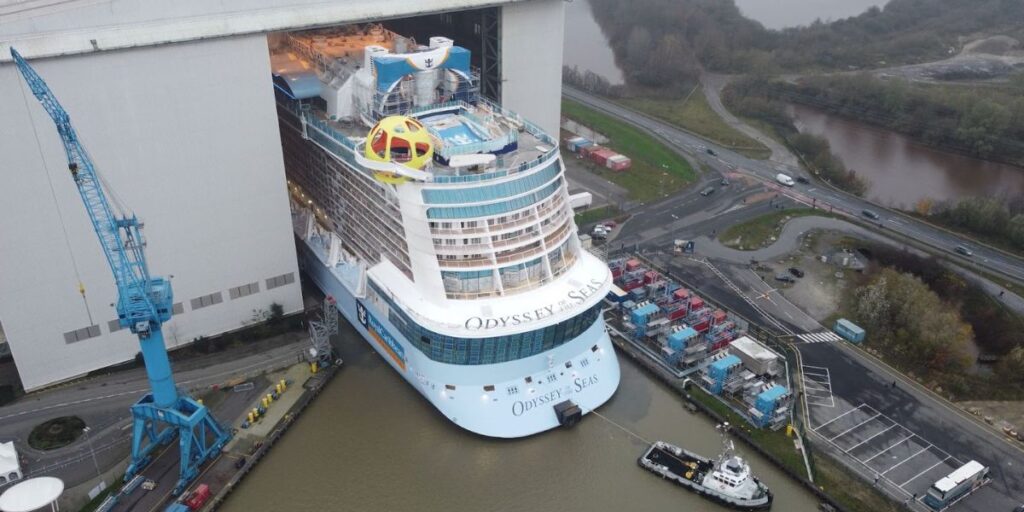
While the actual launching of the ship is therefore low on drama, it’s often accompanied by a lot of pomp – cruise ships are expensive and so cruise lines like to celebrate each stage of their building journey.
Here’s an example from when Disney Wish was floated out – it’s Disney, so of course there are multiple sets of fireworks:
In terms of the safety of the ship, floating a ship out really is the best way. The ship is just positioned on a dry space and then, once that dock is flooded, it naturally begins to float. There’s no risk of waves crashing against it, or shock forces. The supports holding the cruise ship upright don’t move, and the ship just naturally raises from them.
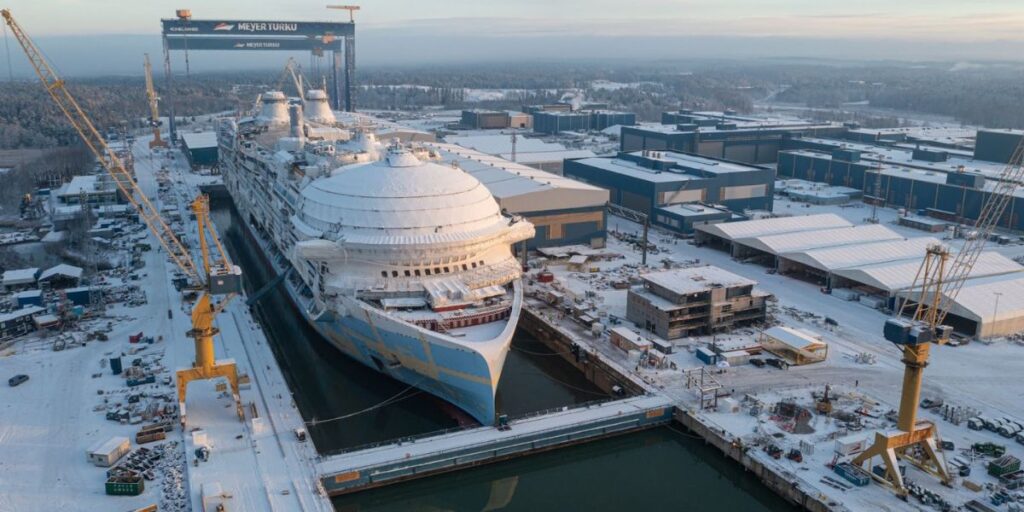
Obviously, for this type of launch to work, you need a lot of space, and so dry docks are limited to just a handful of shipyard locations around the world.
Here’s a look at the biggest ship in the world, Icon of the Seas, floating out for the first time. It involved 219 million litres of water, which took 9 hours to fill the dock.
Cruise ship float outs, step-by-step
Here’s a quick run-down of how cruise ship float outs work.
- Cruise ships are built in a large dry dock, using support structures to make sure they stay upright. It’s always interesting to see photos of a cruise ship out of water – it doesn’t look right.
- Once the outer shell is completed and the ship is judged to be sea-ready, the float out begins.
- The dock is flooded using seawater. This is a slow process that is often done overnight.
- Once the dock is flooded, the ship will begin to float.
- The ship is then dragged into position, often out of the hangar where it was built, using tugboats. The ship’s engines are not usually used at this stage.
- Once the ship is in the new correct position for construction to continue, it is anchored and secured in place.
Construction will then carry on until the ship is almost ready for passengers. She’ll then be sent on sea trials while final fixtures are added.
That’s the practical side of a float out, but there may be other ceremonial steps involved too. Again, this is seen as quite the important stage in a cruise ship’s life.
So often, speeches will be given by the CEO of the cruise line, or another senior staff member. The ship’s godmother may also be present, and a bottle of Champagne may be smashed against the hull. This will be repeated at the naming ceremony too.
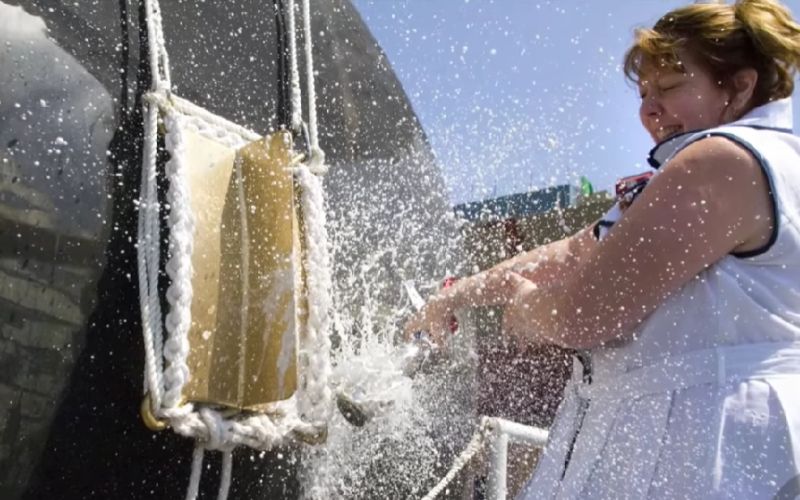
Depending on the ship and the stage of the build, the senior dignitaries may take in the float out from the dock at the side of the ship, or they may board and witness it from the current top deck.
Cruise ships are often finished off in the water
The initial steps of a cruise ship build don’t happen in the water. They happen in a dry dock, which has been drained. Once the exterior of the ship is complete and the ship can be floated, the dock will be flooded, the ship floated out, and construction will continue.
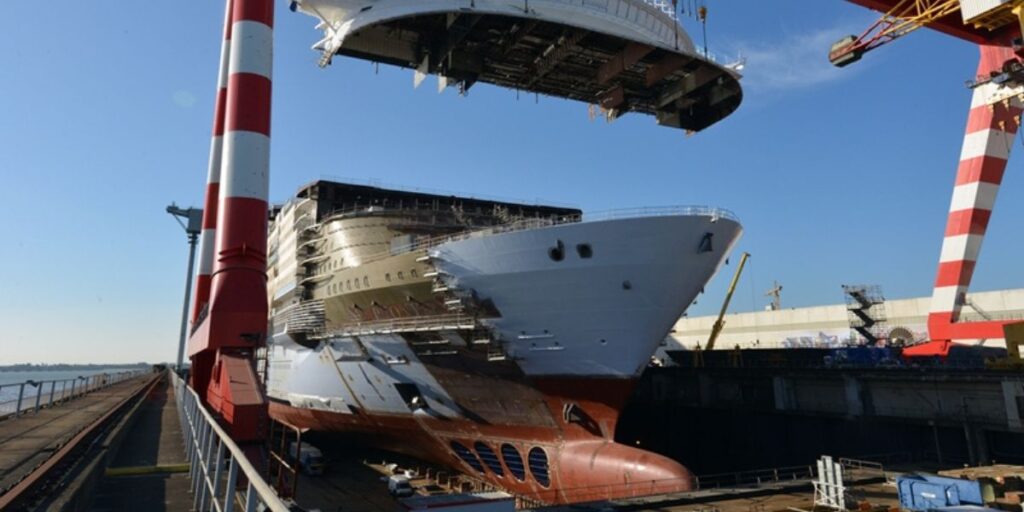
So, ships are partially built while they’re in the water. It may be that the ship needs to be moved to a new location to fit specialist features, or it just has to be outdoors to allow for larger works to be carried out on the ship.
This means that ships are typically floated out as soon as they’re ready. The dry docks will have limited space for just the shell of the ship, and when that is intact and seaworthy, the ship is floated into a bigger area to make it easier to fit the ship with the next building blocks.
Read more: How Long Does It Take To Build A Cruise Ship?
Once a ship has been floated out, it will stay in the water almost permanently. The only difference is when she may need to undergo extensive repairs or renovations, such as Royal Caribbean’s Amplification Program.
When this happens, she’ll return to the shipyard for another dry dock. She’ll be positioned above support structures, and the water will be slowly drained until the ship is sitting on dry land.
The repair work will be carried out, and then the dock will be flooded again, ready for the ship to float out and resume service.
Final word
The process of launching a cruise ship is not so dramatic compared to some other large ship launches. Float outs are quite complex, and they require a dedicated space large enough to house the whole ship – which is why other large ships still stick with the gravitational launches.
The floating out process keeps the cruise ship in perfect condition, with no risk of damage, meaning these incredible investments that cost hundreds of millions of dollars (or into the low billions) are properly looked after and kept pristine for their first guests.
Related posts:
- How Long Does It Take To Build A Cruise Ship?
- How Many Cruise Ships Have Sunk?
- New Cruise Ships That Launched in 2024

Jenni Fielding is the founder of Cruise Mummy. She has worked in the cruise industry since 2015 and has taken over 30 cruises. Now, she helps over 1 million people per month to plan their perfect cruise holidays.

